Related Research Articles
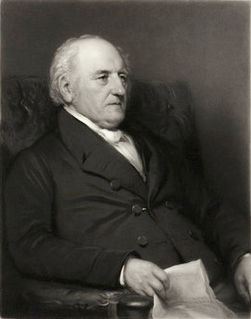
Peter Barlow was an English mathematician and physicist.

An achromatic lens or achromat is a lens that is designed to limit the effects of chromatic and spherical aberration. Achromatic lenses are corrected to bring two wavelengths into focus on the same plane.

New Zealand flax describes the common New Zealand perennial plants Phormium tenax and Phormium colensoi, known by the Māori names harakeke and wharariki respectively. Although given the common name 'flax' they are quite distinct from the Northern Hemisphere plant known as flax

Sir Richard Arkwright was an English inventor and a leading entrepreneur during the early Industrial Revolution. He is credited as the driving force behind the development of the spinning frame, known as the water frame after it was adapted to use water power; and he patented a rotary carding engine to convert raw cotton to "cotton lap" prior to spinning. He was the first to develop factories housing both mechanised carding and spinning operations.
Ignatius Bonomi (1787–1870) was an English architect and surveyor, with Italian origins by his father, strongly associated with Durham in north-east England.
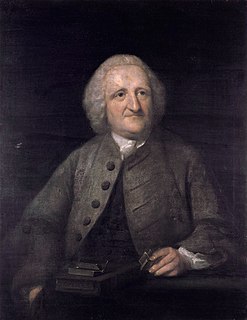
John Dollond FRS was an English optician, known for his successful optics business and his patenting and commercialization of achromatic doublets.
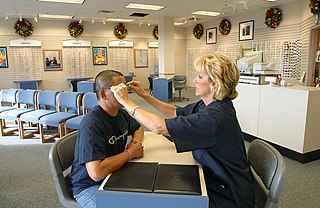
An optician, or dispensing optician, is a technical practitioner who designs, fits and dispenses corrective lenses for the correction of a person's vision. Opticians determine the specifications of various ophthalmic appliances that will give the necessary correction to a person's eyesight. Some registered or licensed opticians also design and fit special appliances to correct cosmetic, traumatic or anatomical defects. These devices are called shells or artificial eyes. Other registered or licensed opticians manufacture lenses to their own specifications and design and manufacture spectacle frames and other devices.

Thomas Cooke was a British scientific instrument maker based in York. He founded T. Cooke & Sons, the scientific instrument company.

Jesse Ramsden FRS FRSE was a British mathematician, astronomical and scientific instrument maker. His reputation was built on the engraving and design of dividing engines which allowed high accuracy measurements of angles and lengths in instruments. He produced instruments for astronomy that were especially well-known for maritime use where they were needed for the measurement of latitudes and for his surveying instruments which were widely used for cartography and land survey both across the British Empire and outside. An achromatic eyepiece that he invented for telescopes and microscopes continues to be known as the Ramsden eyepiece.

Textile manufacture during the Industrial Revolution in Britain was centred in south Lancashire and the towns on both sides of the Pennines. In Germany it was concentrated in the Wupper Valley, Ruhr Region and Upper Silesia, in Spain it was concentrated in Catalonia while in the United States it was in New England. The main key drivers of the Industrial Revolution were textile manufacturing, iron founding, steam power, oil drilling, the discovery of electricity and its many industrial applications, the telegraph and many others. Railroads, steam boats, the telegraph and other innovations massively increased worker productivity and raised standards of living by greatly reducing time spent during travel, transportation and communications.

Matthew Murray was an English steam engine and machine tool manufacturer, who designed and built the first commercially viable steam locomotive, the twin cylinder Salamanca in 1812. He was an innovative designer in many fields, including steam engines, machine tools and machinery for the textile industry.

Peter Dollond was an English maker of optical instruments, the son of John Dollond. He is known for his successful optics business, and for the invention of the apochromat.
Riedel Crystal is a glassware manufacturer based in Kufstein, Austria, best known for its glassware designed to enhance different types of wines. Established in Bohemia in 1756, the company is managed by Georg Riedel and Maximilian Riedel.
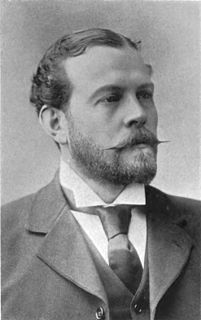
Thomas Rudolphus Dallmeyer, English optician, was the son of John Henry Dallmeyer who ran an optics business. His maternal grandfather, Andrew Ross, was himself the first English photographic optician.
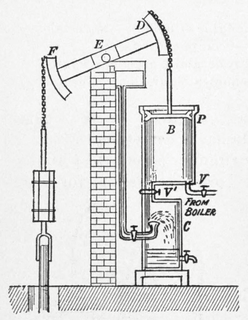
A beam engine is a type of steam engine where a pivoted overhead beam is used to apply the force from a vertical piston to a vertical connecting rod. This configuration, with the engine directly driving a pump, was first used by Thomas Newcomen around 1705 to remove water from mines in Cornwall. The efficiency of the engines was improved by engineers including James Watt, who added a separate condenser; Jonathan Hornblower and Arthur Woolf, who compounded the cylinders; and William McNaught, who devised a method of compounding an existing engine. Beam engines were first used to pump water out of mines or into canals, but could be used to pump water to supplement the flow for a waterwheel powering a mill.

John Marshall was a British businessman and politician from Leeds, West Yorkshire, England.

Douglastown is a hamlet in Kinnettles in Angus, Scotland, three miles south-west of Forfar. It takes its name from the landowner who in about 1789 provided land for James Ivory & Co. to build a flax mill to spin yarn for heavy linen cloth called osnabruks (named from the German town of Osnabruk, where it was originally made. The hamlet of Douglastown was built to house the workers. The mill closed in 1834. It used flax-spinning technology invented by John Kendrew and Thomas Porthouse of Darlington, patented in 1787.

Flax mills are mills which process flax. The earliest mills were developed for spinning yarn for the linen industry.

John Dobbin was an English landscape painter, the son of John and Elizabeth who lived in Weaver's Yard. John, the son, did not follow the same trade as his father, who was a weaver working in Pease's Mill in Darlington town centre, but was apprenticed instead to a cabinet-maker in Grange Road. He was not happy with this choice of career and in his twenties left for London to become an artist.
Taylor Wordsworth and Co was one of the leading producers of machinery for the flax, wool and worsted industries in Leeds, Yorkshire during the British Industrial Revolution. It was established in 1812 and survived until it was taken over in the 1930s.
References
- ↑ O. Gregory, A Treatise of Machanics, vol 2, (London 1806), 511; J.Nicholson, The Operative mechanic, (London 1825), 405; A. J. Warden, The linen trade: ancient and modern (1864; repr. 1967), 690-92; B.Barber, 'John Kendrew & Company, Flax Spinners, 1787-1794', Cleveland History no. 32 (1976/77), 1-3.
- ↑ D.J.Bryden, 'The Ribrights, Opticians in the Poultry, London: and the use of powered machinery for working lenses and mirros at Tewin (Herts), Bromley (Kent) and Darlington (Co. Durham), Bulletin of the Scientific Instrument Society, No 105, (2010), 10-21.
| This textile arts article is a stub. You can help Wikipedia by expanding it. |